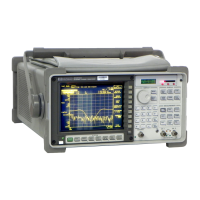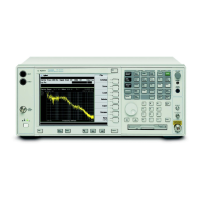Working with
Curve Fit Tables
Once you create a curve fit table, you can compare the synthesized results to
the original frequency response measurement.
You can save and later recall curve fit tables. The curve fit FRF results are
stored in a dedicated register (data register D6 is the default register, though
you can change this or have more than one).
Caution The data registers are cleared when you turn off the analyzer. Save the data register to
afilebeforepower-downoritwillbelost.
When editing curve fit data, it is easier to remove poles and their associated
gain value in a pole-residue synthesis table. Transfer the curve fit table to a
synthesis table and convert the table to pole-residue format.
Agilent 35607A
Curve Fit Option 1D3 Operator's Guide
16-36

